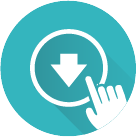As much as we like to believe we are in full control of our decision-making, human beings are a subjective species. Time and time again, data shows our behavior is influenced by subtle factors that may be irrelevant to the decision at hand. Case in point: the call-to-action.
Calls-to-action (CTAs) are a crucial part of your website and other marketing vehicles. They should be well thought-out and tested, to guarantee they are as compelling and targeted as possible. Successfully optimizing your CTAs can improve any number of digital metrics, from click-through-rates and engagement to end-of-the-funnel conversions. They are a button to take seriously.
So how do you make a compelling CTA? The copy itself is important, but there is much more to consider, including size, location, color and versatility. All can influence conversions subtly and substantially, without negatively impacting the user experience. Here are 5 ways to improve your CTAs and begin maximizing on-page rewards.
 1) Within Arm’s Reach
1) Within Arm’s Reach
Your CTA isn’t going to convert if people never see it. Moving your CTA to a prime location can increase conversions simply because more people are seeing it.
Eye tracking research demonstrates that people typically read web content in an “F-shaped” fashion. They begin at the top of a page, move horizontally, skim vertically, and then move horizontally again. Unsurprisingly, readers tend to focus on the top of a web page, paying less attention to content farther down.
If readers focus on the top of your page, that’s where you should put your CTA, right?
Maybe. A CTA above the fold (the part of the page that immediately loads on screen) often converts better, but not always. If your material is especially technical, as it often is in scientific sales, your readers will likely want more information before taking action. In that context a below the fold CTA might convert better.
For the best of both worlds, consider coding multiple CTAs to spread across the page. Scientists who know what they want, or are looking to re-order a product, will reach for the CTA up top. The rest can move through the page and land on the icon at the end.
Putting a CTA where people look can increase conversions, but be sure to conduct A/B testing to determine what works best for your organization.
 2) Ensure Mobile Compatibility
2) Ensure Mobile Compatibility
Mobile marketing was a major trend in 2015, and continues to be important in 2016. You can’t make your readers access your desktop website, but you can make sure that your CTA is equally visible on mobile.
The location of your CTA is likely to change on mobile. Without the visual real-estate available on a desktop website, CTAs often get relegated to the end of a post (where they will be seen the least).
Popups and subscription bars can offer better conversion rates on mobile, as they ensure that your CTA is visible. Regardless of your chosen solution, track and test your mobile conversions – a failure to do so could mean leaving valuable leads untouched.
 3) Optimize CTA Color
3) Optimize CTA Color
Amazingly, color alone can have a significant impact on conversions. Marketing giant HubSpot conducted an A/B test comparing red and green CTA buttons, finding that the red button led to 21 percent more conversions.
Before you rush to make all your buttons firetruck red, examine the results of other testing. Unbounce has advocated the big orange button, and the ideal color for your conversions likely depends on your website and branding. (And don’t forget the unexpected twist: red-green color blindness could play a factor!)
When considering a color for your CTA, your goal is to create an appealing, eye-catching button that will stand-out from the rest of the copy. If your brand colors are the primary hues for your website, you may need to choose a new color to add to your arsenal and make your CTAs pop. Alternatively, using a secondary or tertiary brand color can keep you consistent while still creating a visual contrast. (Use this seriously great Adobe tool at color.adobe.com to find the best match.)
A simple alternative method is the incorporation of white space. Surrounding your button with a blank backdrop makes it the focus of the page, generating more clicks.
As with all of these changes, testing is as critical here as it is in science. There are general trends that have value, but you won’t understand the best color combination for your website unless you test variations.
 4) Include Moving Elements
4) Include Moving Elements
With the increasing capabilities of web design, it’s easier than ever to add moving elements to your call to action. The eye is drawn to movement, so incorporating moving parts can be a great way to bring more attention to your CTA.
However, it’s also easy to get carried away. Bright flashes and rapid movement are more likely to annoy your readers than anything else, and is reminiscent of websites from the 90s. Keep movement simple and elegant for the best results from an animated CTA.
 5) Increase Button Size
5) Increase Button Size
In user experience design, Fitts’ Law states that the time required to quickly move to a target is a function of distance and target width. Essentially, the larger and closer your CTA, the easier it is to click on. Making your call-to-action easy to follow can improve conversions.
Fitts’ Law is one reason it’s important to optimize the location of your CTA, but it also means that increasing your CTA size can be effective. Again, it’s worth your time to conduct A/B tests; a big button is good, but an ostentatiously large button is annoying and gets in the way.
Size, location, color, compatibility, and effects can all improve your CTA buttons, increasing the likelihood of customer conversions. As with all changes, A/B testing is recommended to find the perfect combination for your website, but incorporating these design elements can strengthen your conversions, your sales and your company.


















